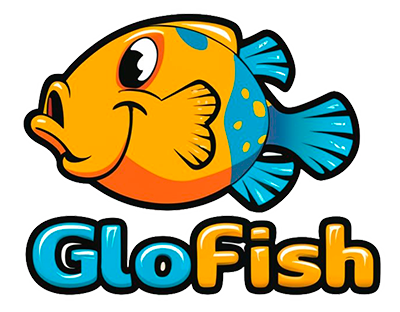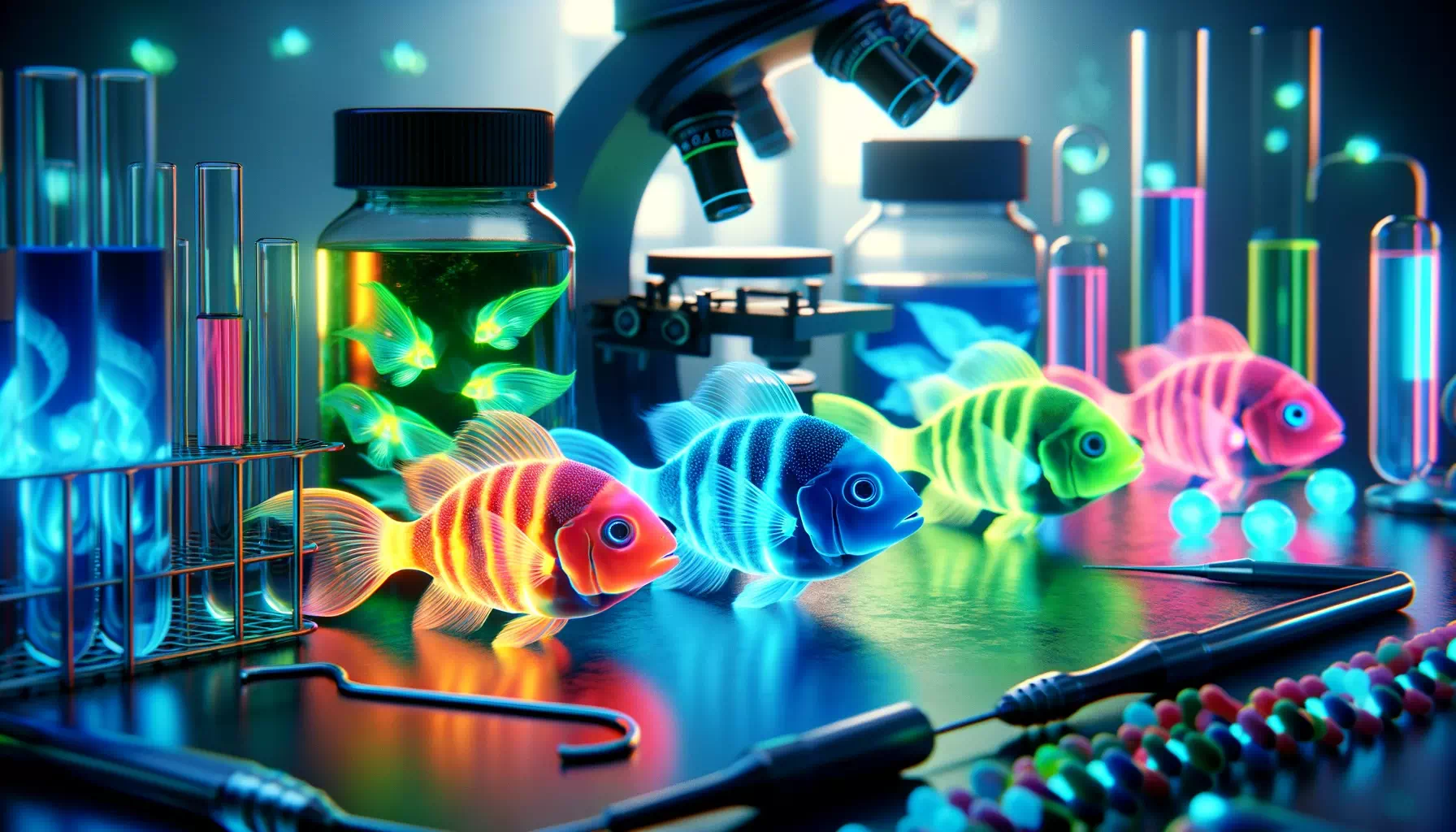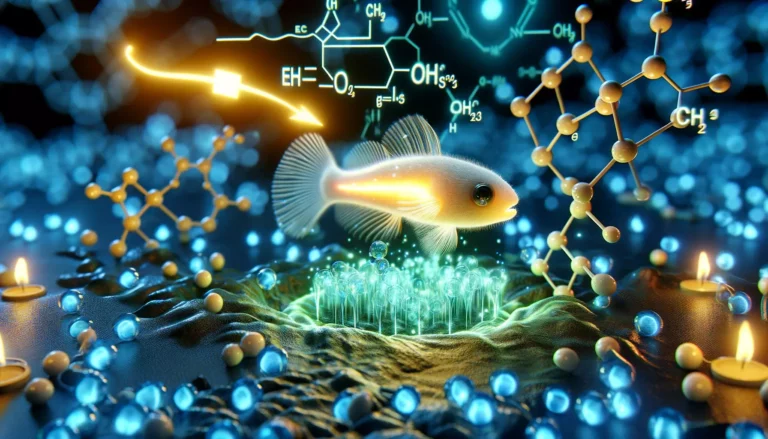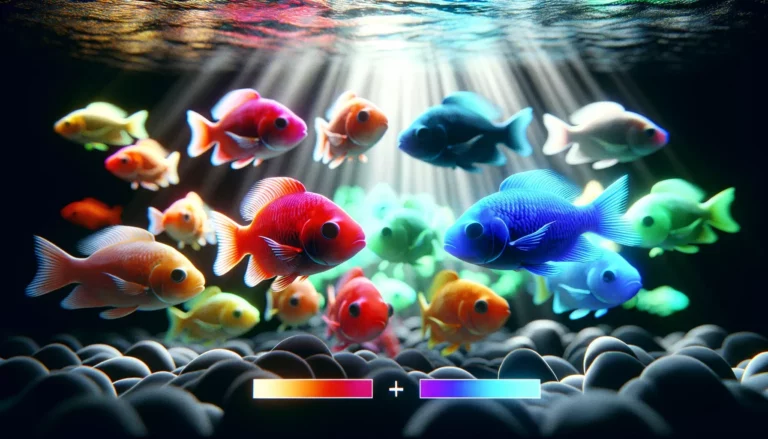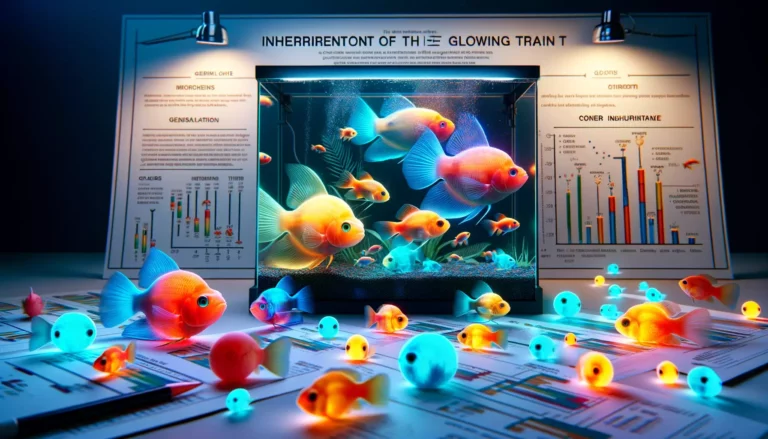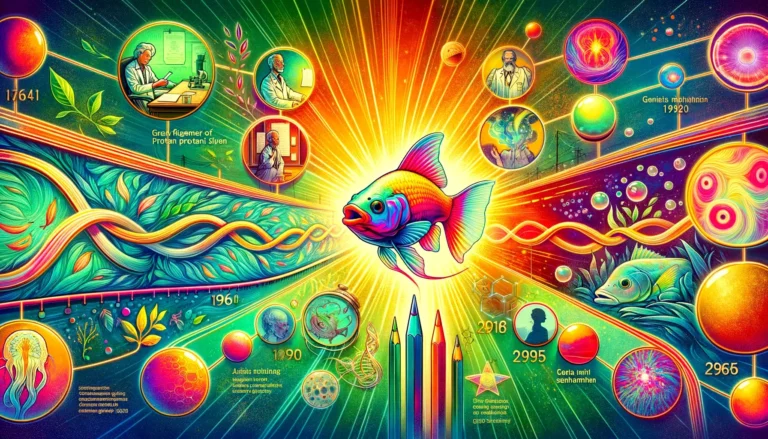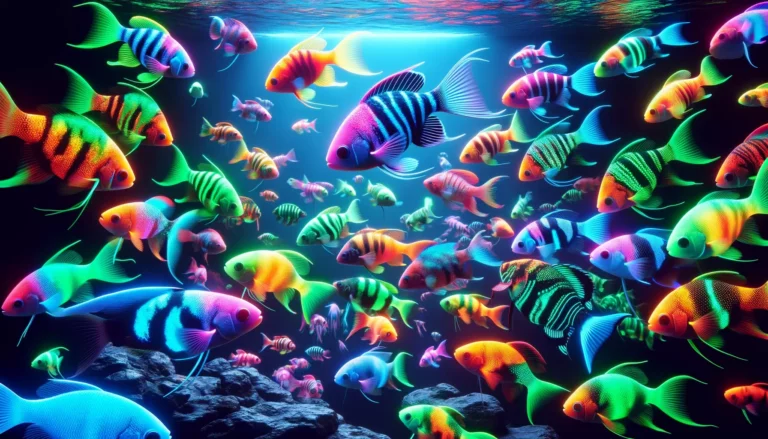Measures are in place to conserve and protect GloFish in their natural habitats
GloFish are unique aquarium fish. They are genetically modified versions of natural species. This modification adds vibrant, fluorescent colors. GloFish can be zebra danios, tetras, or barbs.
The process involves inserting a gene from marine organisms. This gene produces a fluorescent protein. GloFish display bright red, green, blue, orange, or purple colors. They are similar to their natural counterparts in behavior and care needs.
Despite their altered appearance, GloFish can breed. They can produce offspring with fluorescent traits. They require the same habitats as their natural equivalents. But they are not found in the wild.
Their creation aimed at detecting environmental pollutants. GloFish react to toxins by changing their brightness. This application is less common now. They are mainly kept as ornamental pets.
Origins and Natural Habitats of GloFish
GloFish were first created in Singapore. They were developed from existing freshwater fish species. These species include zebra danios, tetras, and barbs. Each species has its own natural habitat.
Zebra danios originate from South Asia. They thrive in streams and rice paddies. Tetras are native to South America. They prefer slow-moving or still waters.
Barbs come from parts like Sri Lanka and Indonesia. They are found in various freshwater environments. These habitats include rivers, streams, and ponds. GloFish in aquariums need similar conditions.
Their natural habitats are diverse. But they share common needs in water quality and temperature. They need clean, well-oxygenated water. Suitable temperatures vary depending on the species.
Conservation Status: GloFish as Endangered Species
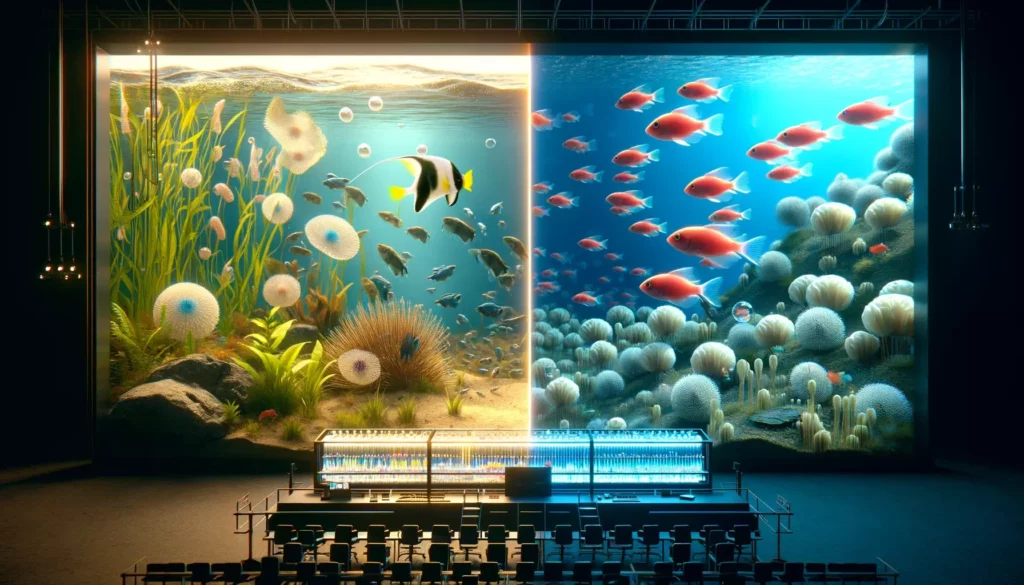
GloFish are not naturally occurring and thus not endangered. They are the result of genetic modifications. Their conservation status differs from wild species. They don’t exist in natural ecosystems.
Their wild counterparts may face conservation challenges. For example, zebra danios are not endangered. But some tetras and barbs are at risk. Habitat destruction and pollution affect them.
Efforts to conserve GloFish focus on ethical breeding. Responsible pet ownership is also crucial. This prevents potential ecological impacts. These fish should not be released into the wild.
Education plays a key role in conservation. It helps understand GloFish and their natural equivalents. Awareness reduces risks to natural ecosystems. Responsible practices support biodiversity.
Environmental Threats Facing GloFish in Natural Habitats
GloFish face similar threats as their wild relatives. Pollution and habitat destruction are major concerns. These threats impact their natural counterparts in the wild. GloFish in home aquariums are less affected.
Pollution affects water quality and fish health. It comes from industrial and agricultural runoff. Habitat destruction reduces available living space. It results from urban development and deforestation.
Climate change also poses a threat. It alters water temperatures and ecosystems. This can lead to habitat loss. Fish become vulnerable to diseases and predators.
Conservation efforts target habitat restoration and pollution control. They aim to maintain healthy ecosystems. This benefits all aquatic life. Public awareness and policy changes are key.
Impact of Human Activities on GloFish and Their Habitats

Human activities significantly impact GloFish and their natural counterparts. Aquatic ecosystems face challenges from pollution and habitat destruction. Industrial waste contaminates water bodies. Agricultural runoff introduces harmful chemicals.
Urban expansion leads to habitat loss. Natural water bodies are often converted or polluted. This reduces the available habitat for fish. GloFish, being aquarium fish, are indirectly affected.
Overfishing is another issue. It disrupts natural food chains. This affects the balance of aquatic ecosystems. GloFish don’t face this directly, but their wild relatives do.
Conservation efforts must focus on sustainable practices. Reducing pollution and protecting habitats are key. Awareness and responsible pet ownership help. They prevent accidental release into the wild.
Legal Protections for GloFish in Natural Habitats
GloFish, as genetically modified organisms, have unique legal considerations. They are regulated differently from wild fish species. In some regions, their sale and ownership are restricted. This is due to concerns about ecological impacts.
In the United States, the FDA oversees GloFish regulation. They are deemed safe for the environment. But local laws may vary. Some states have specific restrictions.
GloFish are not released into natural habitats. This avoids ecological disruptions. Their legal protection focuses on controlled breeding and sale. It ensures ethical practices in the pet trade.
International laws vary on GMOs. Some countries have strict regulations. This includes import and breeding of GloFish. Awareness of local laws is important for potential owners.
Comparing Conservation Efforts: GloFish vs. Non-Genetically Modified Species
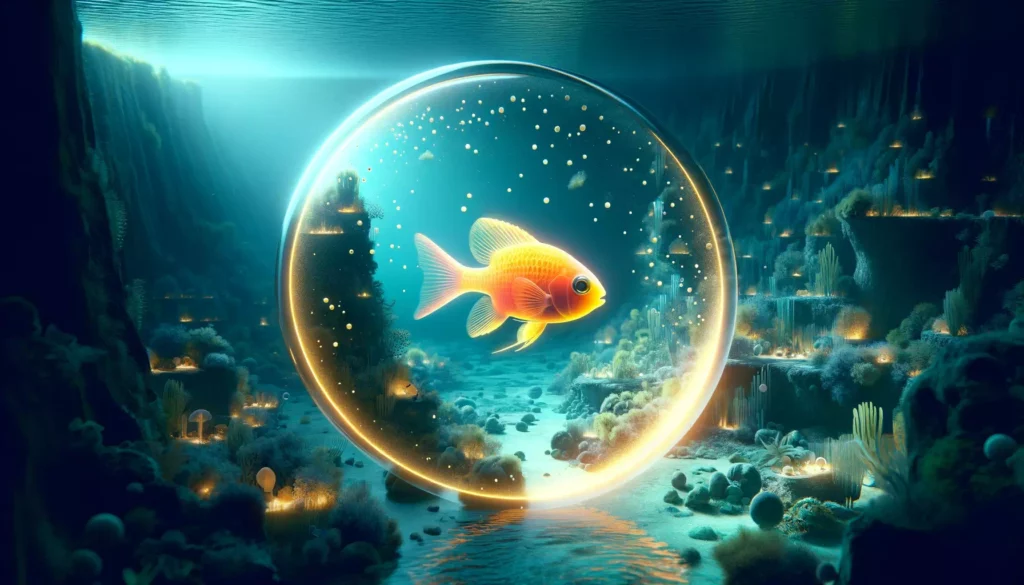
Conservation efforts for GloFish and non-genetically modified (non-GM) fish differ significantly. Non-GM species often require habitat conservation and species protection. Their survival depends on ecosystem health. This includes clean water, balanced food chains, and habitat preservation.
GloFish, being genetically modified, don’t exist in wild habitats. Their conservation focuses on ethical breeding practices. It also involves preventing their release into the wild. Such releases could disrupt local ecosystems.
For non-GM species, conservation can involve breeding programs. These programs aim to boost dwindling populations. They also sometimes reintroduce species into restored habitats.
Awareness and education are crucial for both. They promote responsible pet ownership and environmental stewardship. Conservation strategies must be species and situation-specific.
Role of Zoos and Aquariums in GloFish Conservation
Zoos and aquariums play a unique role in GloFish conservation. They focus on education and research rather than species preservation. As GloFish are not found in the wild, traditional conservation isn’t applicable.
These institutions educate the public about genetic modification. They explain the differences between GloFish and wild fish. This education helps in understanding ecological impacts.
Research in these settings can inform ethical breeding practices. It can also explore the ecological implications of GloFish. This research is important for responsible pet trade.
Zoos and aquariums also demonstrate proper care for GloFish. This includes ideal habitat conditions and health care. They set standards for private aquariums to follow.
Breeding Programs for GloFish Conservation
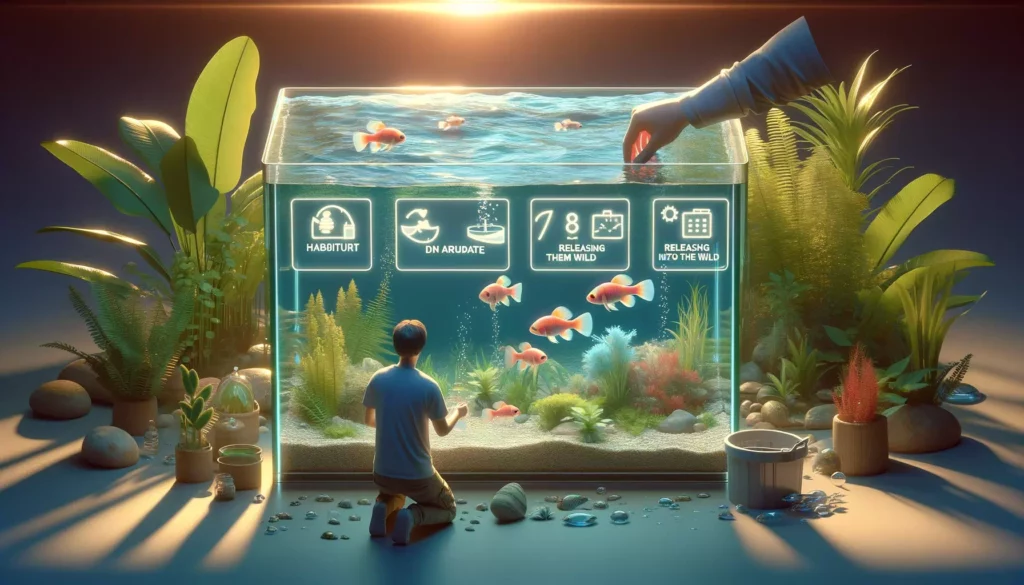
Breeding programs for GloFish focus on ethical and controlled practices. These programs ensure healthy and sustainable populations. They are different from wild fish conservation programs. Wild fish programs often aim to increase dwindling populations.
GloFish breeding requires specific genetic knowledge. Breeders must understand how to maintain the fluorescent traits. They also need to ensure the overall health of the fish. This includes managing genetic diversity.
These programs are primarily conducted by specialized breeders. They follow strict guidelines to prevent ecological impact. The main goal is to avoid releasing GloFish into the wild. Such releases could disrupt local ecosystems.
Responsible breeding also involves adhering to legal regulations. Different countries have varied laws on GMO organisms. Breeders must comply with these regulations. This ensures ethical practices in the GloFish trade.
Individual Contributions to GloFish Conservation and Habitat Protection
Individuals can play a significant role in GloFish conservation and habitat protection. Responsible pet ownership is key. This includes proper care and preventing accidental releases. GloFish should never be released into the wild.
Aquarium maintenance is crucial. This ensures a healthy environment for GloFish. Proper water quality, temperature, and diet are important. They mimic the natural conditions of GloFish’s non-GM counterparts.
Supporting ethical breeding practices is another way. This involves purchasing GloFish from reputable sources. It helps discourage irresponsible breeding and trading practices.
Raising awareness about GloFish and their natural counterparts is beneficial. Educating others about the importance of aquatic ecosystems matters. This fosters a broader understanding of environmental stewardship.
